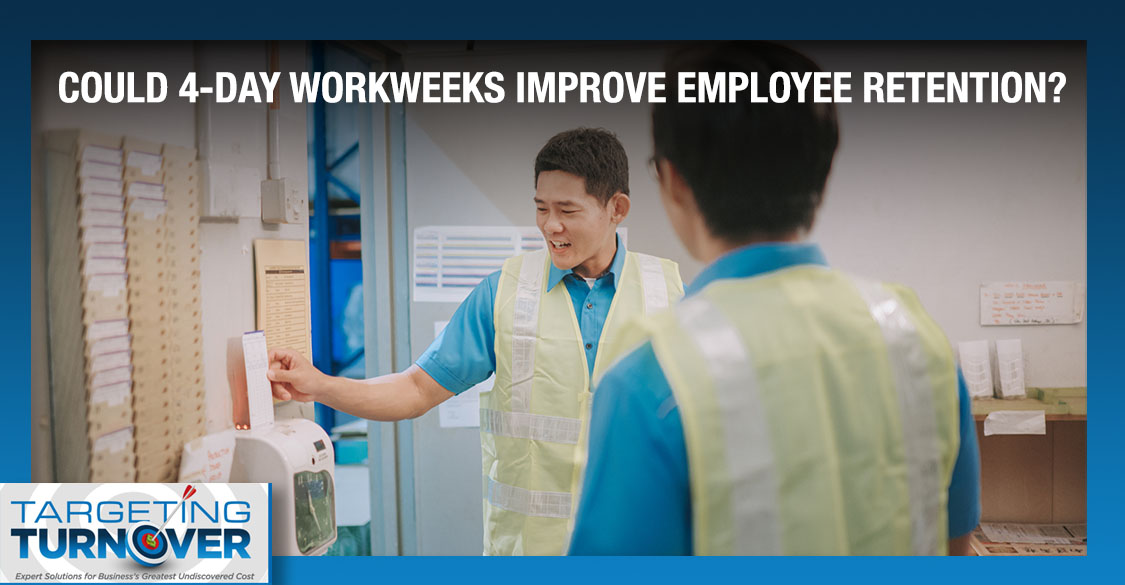Data shows a four-day workweek is popular with employees. On the company side, data suggests work satisfaction and productivity are up, recruiting is easier…and employee turnover is down. And during these days workforce shortages, every company is seeking a recruiting edge. Could this be “it”?
What 60 MINUTES Got Wrong About WFH Commercial Real Estate Crisis

60 MINUTES did a deep dive into the pending commercial real estate crisis on Sunday[i]. Focusing on New York City as their main example, reporter Jon Wertheim connected the dots between so many employees now working from home and the resulting impact which is creating empty floors in formerly-occupied high-rises across our cities. As just one example, he cited that NYC already has empty office space the equivalent of 30 Empire State Buildings. The long fuse is that $1.5 trillion in loans to commercial developers are due in the next two years, all happening when occupancy rates are already at their all-time lows. The return-to-office movement, he said, has “stalled out.”
Work From Home vs Return-to-Office Long-Term Impacts
How serious is this issue for our long-term economy? From McKinsey’s report titled Empty spaces and hybrid places: The pandemic’s lasting impact on real estate[ii]:
- Office attendance has stabilized at 30% below its pre-pandemic norms.
- Untethered from their offices, residents have left urban cores and shifted their shopping elsewhere. Foot traffic near stores in metropolitan areas remains 10 to 20 percent below pre-pandemic levels.
- In a moderate scenario that we modeled, demand for office space is 13 percent lower in 2030 than it was in 2019 for the median city in our study. In a severe scenario, demand falls by 38 percent in the most heavily affected city.
In addition, Morgan Stanley says commercial real estate will crash harder than during the Great Financial Crisis, and that no sector will be immune to the fallout. Capital Economics says office values are unlikely to recover by 2040. Goldman Sachs saw commercial real estate’s future this way:
“The potential for disruptions to U.S. commercial real estate activity from a pullback in small bank credit availability is substantial, unaided by the fact that the segments most dependent on bank financing—offices and retail properties—are also facing the strongest risk of functional obsolescence.[iii]”
—–
Further Reading: The Truth About Who Will Work From Home
—–
What 60 MINUTES Got Wrong in Its Report
The wrong part of Sunday night’s report was 60 MINUTES indicated the root cause of this current-and-to-become worse economic catastrophe was the pandemic which drove many workers into makeshift home offices on the fly. While that latter part is true, the real cause is that CEOs cannot demand that workers return to the office because our current workforce shortage gives employees unprecedented power to say “no”.
Had the pandemic occurred ten years earlier, CEOs would say “return” and employees would readily comply. Not so during our 30-year shortfall of workers on every level.
—–
Further Reading: Confirmed: Mandated Return-to-Office = Higher Turnover
—–
Workforce Facts as We Know Them Now
For starters, about 40% of the US workforce could actually perform their jobs from home.[iv] This means that those workers are not tied to equipment or people such that they can perform their jobs from anywhere. The remaining 60% must work in a specific location and therefore cannot work from home like those who work in factories, schools, or for many in healthcare. This brings to mind the popular holiday season joke, that Rudolph told Santa the reindeer wanted to work from home.
Presenting these data in percentages disguises their importance. Our Bureau of Labor Statistics tells us that about 168 million are working today, meaning the aforementioned economic impact of those who could potentially work from home exceeds 67 million people. Pre-2020, the great majority of these folks were working in urban centers while also dining and shopping there. Not so much now which leaves a lot of downtown diners looking for noon-time customers.
Early on during the pandemic, the Wall Street Journal surveyed a group of CEOs about their work-from-home and return-to-work preferences. Let’s use the acronyms WFH and RTO going forward. I’ll paraphrase from memory the one quote that jumped out the most:
“You can’t tell me that a kid graduating from college will learn as much from his dining room in his first three years as he would by walking up and down the halls of our office.”
—–
Further Reading: Two Things I Can Predict About Working From Home
—–
Supporting this quote, here are three widely-reported numbers that clarify CEOs’ positions regarding RTO[v]:
- 90% of companies plan to implement RTO policies by the end of 2024.
- Nearly 30% report they will threaten to fire employees who don’t comply.
- Just 2% say they will never require employees to return to work in person.
That push appears to be working as fewer than 26% of US households still have someone working remotely at least one day a week, a sharp decline from the early-2021 peak of 37%, according to the two latest Census Bureau Household Pulse Surveys.[vi] The key phrase though is “at least one day a week”.
But before moving on, let’s step into a 2020 time machine and recall the number of journalists who reported that chief financial officers would be quite happy for workers to continue working from home so they could cut back on those hefty commercial real estate bills. Those days and those predictions are long behind us.
Here is a summary of the most recent research findings:
- Employees who can WFH strongly prefer to do so.
- These preferences vary though by age and income as older and higher-paid workers would rather avoid the office altogether, while younger workers want at least occasional social connection.
- While hybrid scheduling is trending strong, there is no magical days-in/days-out winning formula.
- WFH vs RTO productivity and innovation data mostly favors RTO, though some detailed data has uncovered that overall productivity has been slipping for years prior to COVID-19.
- CEOs’ bias that employees RTO vs WFH might be exceeded by the biases of their own managers, many of whom don’t trust that employees are actually working from home.
- Employees like WFH because of schedule flexibility, increased work/life balance potential, and WFH saves money on commuting, clothing, and more.
- But employees also face disadvantages that are not so obvious such reduced opportunities for their own professional development as well as women facing more subtle discrimination based on assumed childcare distractions.
- RTO mandates have negatively impacted turnover and recruiting, especially among those companies that have changed policies from “WFH is good” to “WFH is no longer permitted”.
- CEOs are varying between carrots and sticks to drive RTO, potentially including that those employees who appear onsite more frequently will be rewarded with more pay and promotions.
- While most CEOs will push for more RTO, newly-developed technologies will make WFH easier and more productive.
And not to be overlooked, Unilever which owns Dove, Axe and other products reported a 15% surge in deodorant sales that coincided with the RTO push[vii]. That’s good news for all of us.
So the punchline here is that our current and projected-future workforce challenge is the real cause of the commercial real estate crisis…as it will also be for the additional struggles colleges and universities will face as companies continue to down-grade job requirements by eliminating the mandate for college degrees.
—–
There has never been a better time to implement fresh solutions to retain your best workers. Write me: DFinnegan@C-SuiteAnalytics.com or connect with me to have a one-on-one conversation on ways you can get started today on your journey to improve your employee retention and engagement.
[i] The report was broadcasted on CBS on 1.14.24
[ii] https://www.mckinsey.com/mgi/our-research/empty-spaces-and-hybrid-places
[iii] The quotes from Morgan Stanley, Capital Economics, and Goldman Sachs appeared in https://finance.yahoo.com/news/morgan-stanley-says-commercial-real-202952701.html
[iv] https://www.pewresearch.org/short-reads/2023/03/30/about-a-third-of-us-workers-who-can-work-from-home-do-so-all-the-time/
[v] https://www.cnbc.com/2023/09/11/90percent-of-companies-say-theyll-return-to-the-office-by-the-end-of-2024.html
[vi] https://fortune.com/2023/10/16/remote-work-hybrid-return-to-office-rto/
[vii] https://fortune.com/europe/2023/10/27/unilever-deodorant-personal-care-hygiene-wfh-return-to-work/



